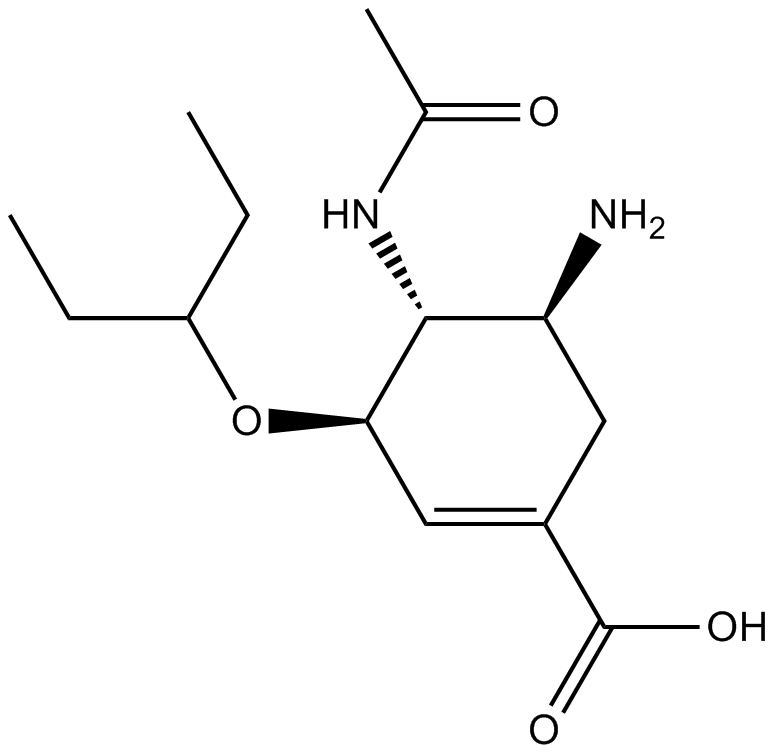Oseltamivir acid (Synonyms: GS-4071, Ro 64-0802) |
| Catalog No.GC14780 |
A neuraminidase inhibitor and antiviral
Products are for research use only. Not for human use. We do not sell to patients.

Cas No.: 187227-45-8
Sample solution is provided at 25 µL, 10mM.
Oseltamivir is an inhibitor of influenza neuraminidase [1].
Oseltamivir is a prodrug that is converted by intestinal and/or hepatic esterases to the neuraminidase inhibitor molecule, oseltamivir carboxylate. Neuraminidase cleaves the terminal a-Neu5Ac residues from the newly synthesized virion progeny and let it elute from the infected cell and seek new host cells to infect. Oseltamivir efficiently block sialidase activity and significantly inhibit the releasing mechanism [1].
In the treatment of adults, oseltamivir reduces the time to first alleviation of symptoms and investigator mediated unverified pneumonia. In prophylaxis trials, oseltamivir reduced symptomatic influenza in participants by 55%. Oseltamivir also has some harm. Adults treated with oseltamivir are associated with an increased risk of nausea. And in prophylaxis trials there is an increased risk of headaches on-treatment [2].
As a neuraminidase inhibitor, the substitution of the amino acid histidine to tyrosine at position 275 (H275Y) in the neuraminidase gene of H1N1 can cause the resistance of oseltamivir [3].
References:
[1] Enguang Feng, Deju Ye, Jian Li, Dengyou Zhang, Jinfang Wang, Fei Zhao, Rolf Hilgenfeld, Mingyue Zheng, Hualiang Jiang and Hong Liu. Recent Advances in Neuraminidase Inhibitor Development as Anti-influenza Drugs. Chem Med Chem 2012, 7: 1527 – 1536.
[2] Tom Jefferson reviewer, Mark Jones, Peter Doshi, Elizabeth A Spencer, Igho Onakpoya, Carl J Heneghan. Oseltamivir for influenza in adults and children: systematic review of clinical study reports and summary of regulatory comment. BMJ. 2014, 348: g2545.
[3] Rashmi Dixit, Gulam Khandaker, Scott Ilgoutz, Harunor Rashid and Robert Booy. Emergence of Oseltamivir Resistance: Control and Management of Influenza before, during and after the Pandemic. Infectious Disorders – Drug Targets. 2013, 13 (1): 34-45.
Average Rating: 5 (Based on Reviews and 30 reference(s) in Google Scholar.)
GLPBIO products are for RESEARCH USE ONLY. Please make sure your review or question is research based.
Required fields are marked with *




















